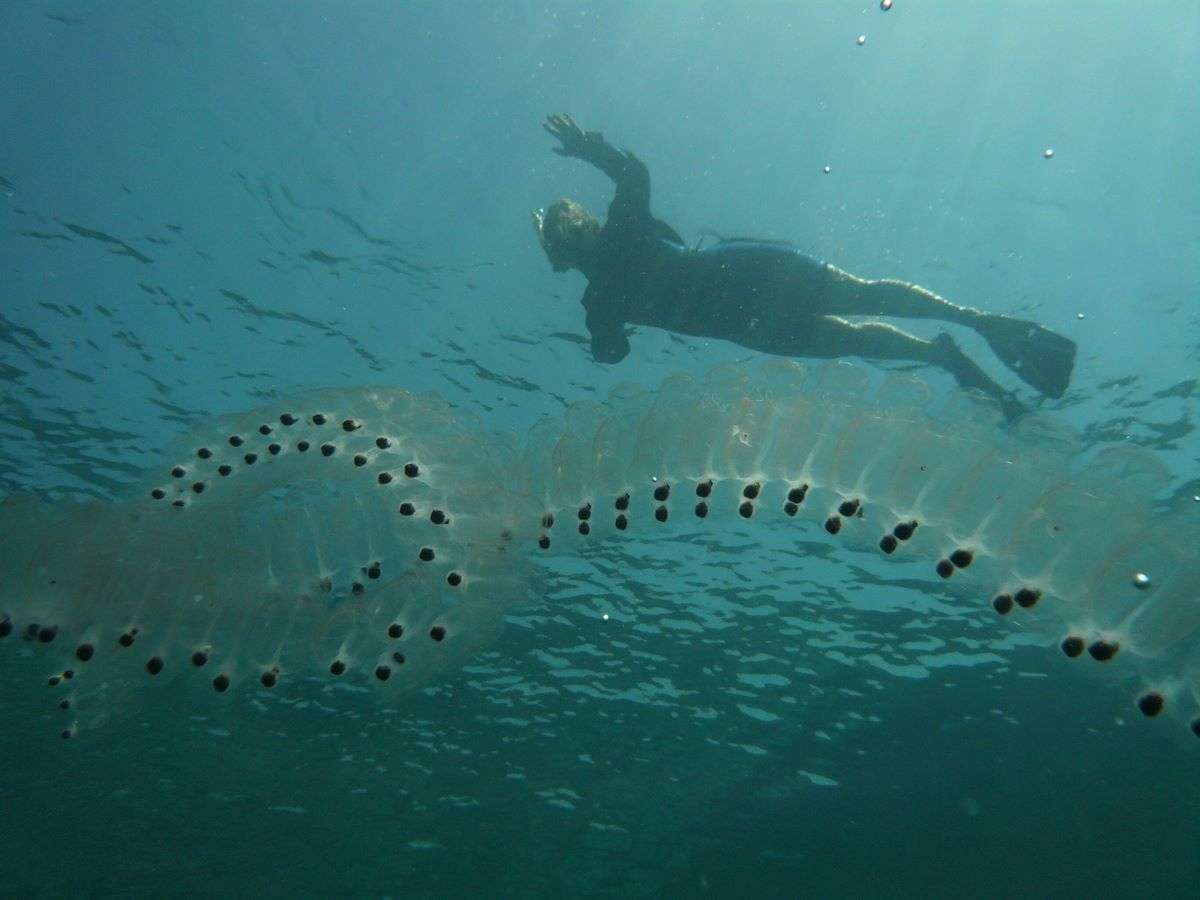Mystery Of The Silent Salp Seas

Have you ever heard of salps? These fascinating sea creatures might look like jellyfish, but they belong to a different group called tunicates. Found in oceans worldwide, salps play a crucial role in marine ecosystems. They drift in the water, filtering plankton and other tiny particles for food. What's amazing is their ability to form long chains, sometimes stretching over several meters. These chains can create mesmerizing underwater displays. But salps are more than just beautiful; they help regulate carbon in the ocean by trapping it in their bodies and sinking to the seafloor when they die. Curious to learn more about these silent ocean dwellers? Let's dive deeper into their world.
What Are Salps?
Salps are fascinating marine creatures resembling jellyfish but belong to a different group called tunicates. These gelatinous animals drift through the ocean, often forming long chains. They play a crucial role in the marine ecosystem by filtering water and consuming phytoplankton.
Where Can You Find Salps?
Salps inhabit various oceans around the world, but some locations are particularly known for their abundance. Here are some of the best places to witness these silent sea wonders:
Southern Ocean
The Southern Ocean, encircling Antarctica, is a prime spot for salp sightings. The cold, nutrient-rich waters support large populations of these creatures, especially during the summer months.Tasman Sea
Located between Australia and New Zealand, the Tasman Sea is another hotspot. The warm currents and abundant plankton make it an ideal habitat for salps.Mediterranean Sea
The Mediterranean Sea, with its unique mix of warm and cool waters, provides a perfect environment for salps. They can often be seen near the surface, especially in the spring and summer.North Atlantic Ocean
Off the coast of the United States and Canada, the North Atlantic Ocean is home to various salp species. The Gulf Stream's warm waters create favorable conditions for their growth and reproduction.Indian Ocean
The Indian Ocean, particularly around the Seychelles and Maldives, offers excellent opportunities to observe salps. The tropical waters and coral reefs provide a rich feeding ground for these creatures.
Why Are Salps Important?
Salps play a significant role in the ocean's health and balance. They help maintain water quality by filtering out microscopic algae and other particles. Additionally, their waste products contribute to the ocean's carbon cycle, aiding in carbon sequestration.
How Do Salps Reproduce?
Salps have a unique and fascinating reproductive cycle. They can reproduce both sexually and asexually, depending on environmental conditions. This adaptability allows them to thrive in various oceanic environments.
What Threats Do Salps Face?
Despite their resilience, salps face several threats that could impact their populations:
Climate Change
Rising ocean temperatures and changing currents can disrupt salp habitats, affecting their distribution and abundance.Pollution
Plastic pollution and other contaminants can harm salps, either directly or by affecting their food sources.Overfishing
Overfishing of certain fish species can lead to an imbalance in the marine ecosystem, indirectly impacting salp populations.
How Can You Help Protect Salps?
Protecting salps and their habitats requires collective effort. Here are some ways you can contribute:
Reduce Plastic Use
Minimize plastic waste by using reusable bags, bottles, and containers. Participate in beach clean-ups to help keep oceans clean.Support Sustainable Fishing
Choose seafood from sustainable sources to help maintain the balance of marine ecosystems.Raise Awareness
Educate others about the importance of salps and the threats they face. Share information on social media and participate in conservation initiatives.
Salps may be silent, but their presence speaks volumes about the health of our oceans. By understanding and protecting these remarkable creatures, we contribute to the well-being of the entire marine ecosystem.
The Silent Salp Seas
Silent Salp Seas hold many secrets. These tiny creatures play a big role in ocean health. They help with carbon cycling by sinking carbon to the ocean floor. This process helps fight climate change. Salps also serve as food for many marine animals, keeping the food web balanced.
Exploring these seas can teach us a lot about marine ecosystems. Scientists are still learning about the impact of salps on the environment. Their unique way of living and moving through the water makes them fascinating to study.
Next time you think about the ocean, remember the silent salps. They may be small, but their impact is huge. Understanding them better can help protect our oceans for future generations. So, keep an eye out for more discoveries about these amazing creatures.

